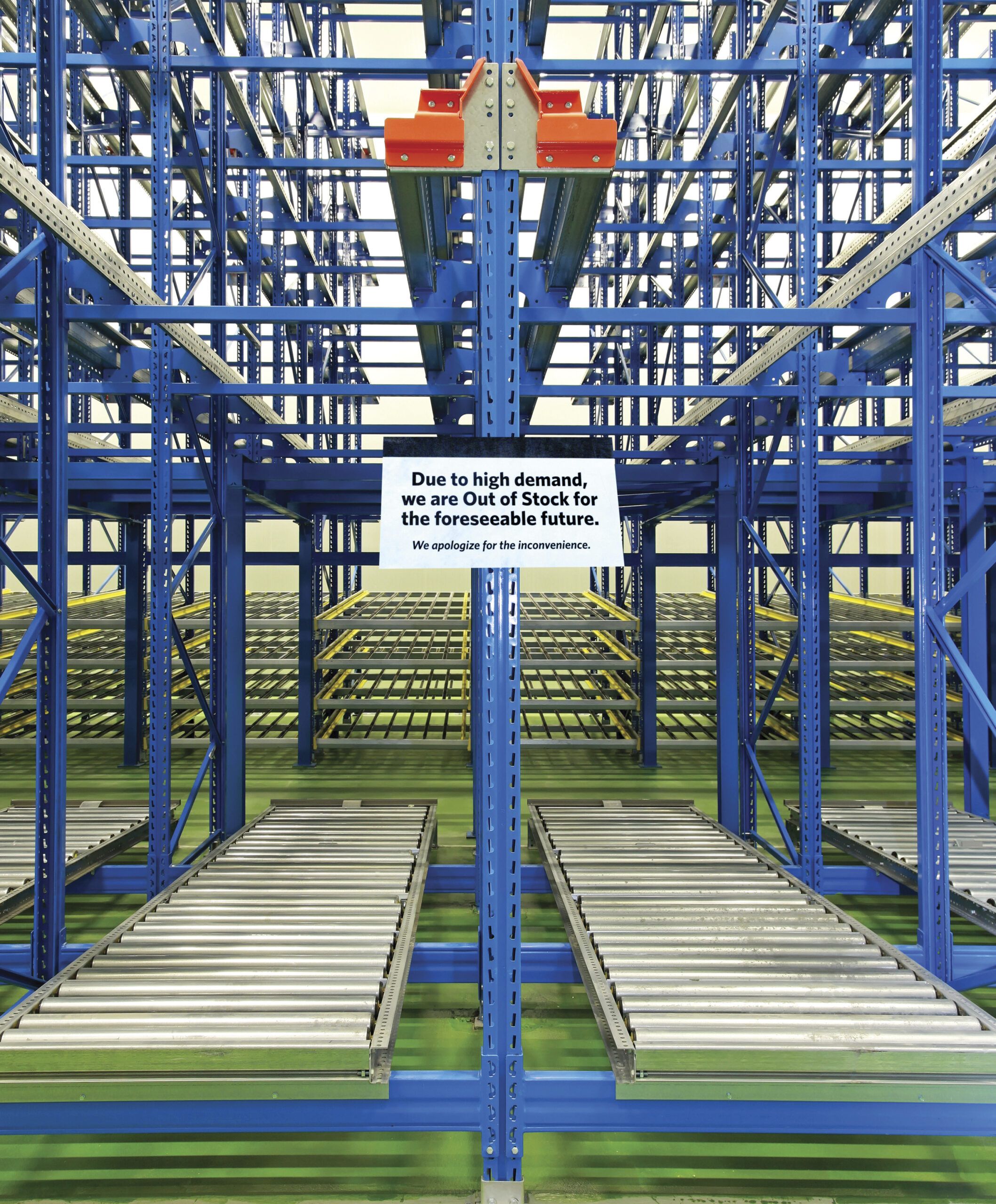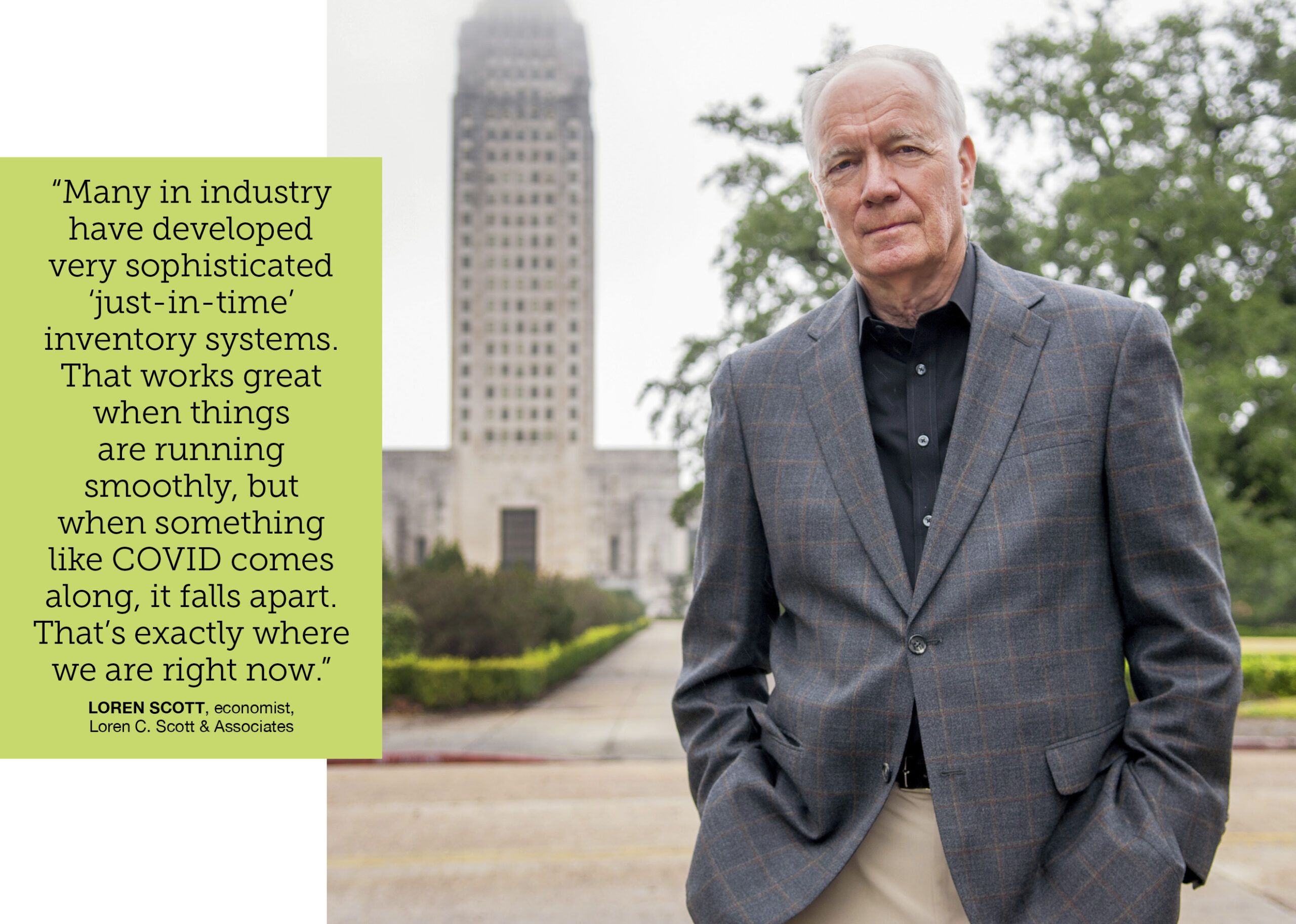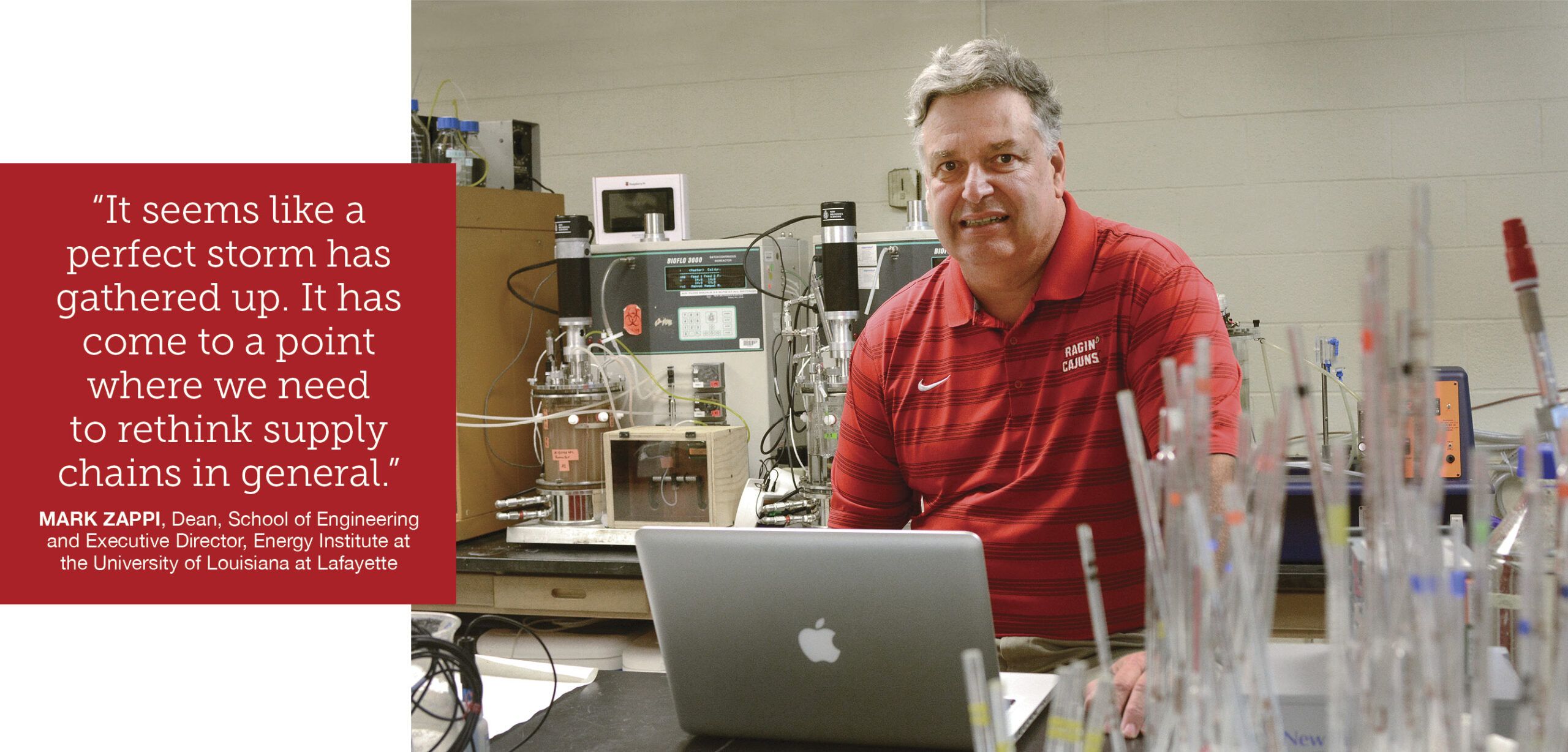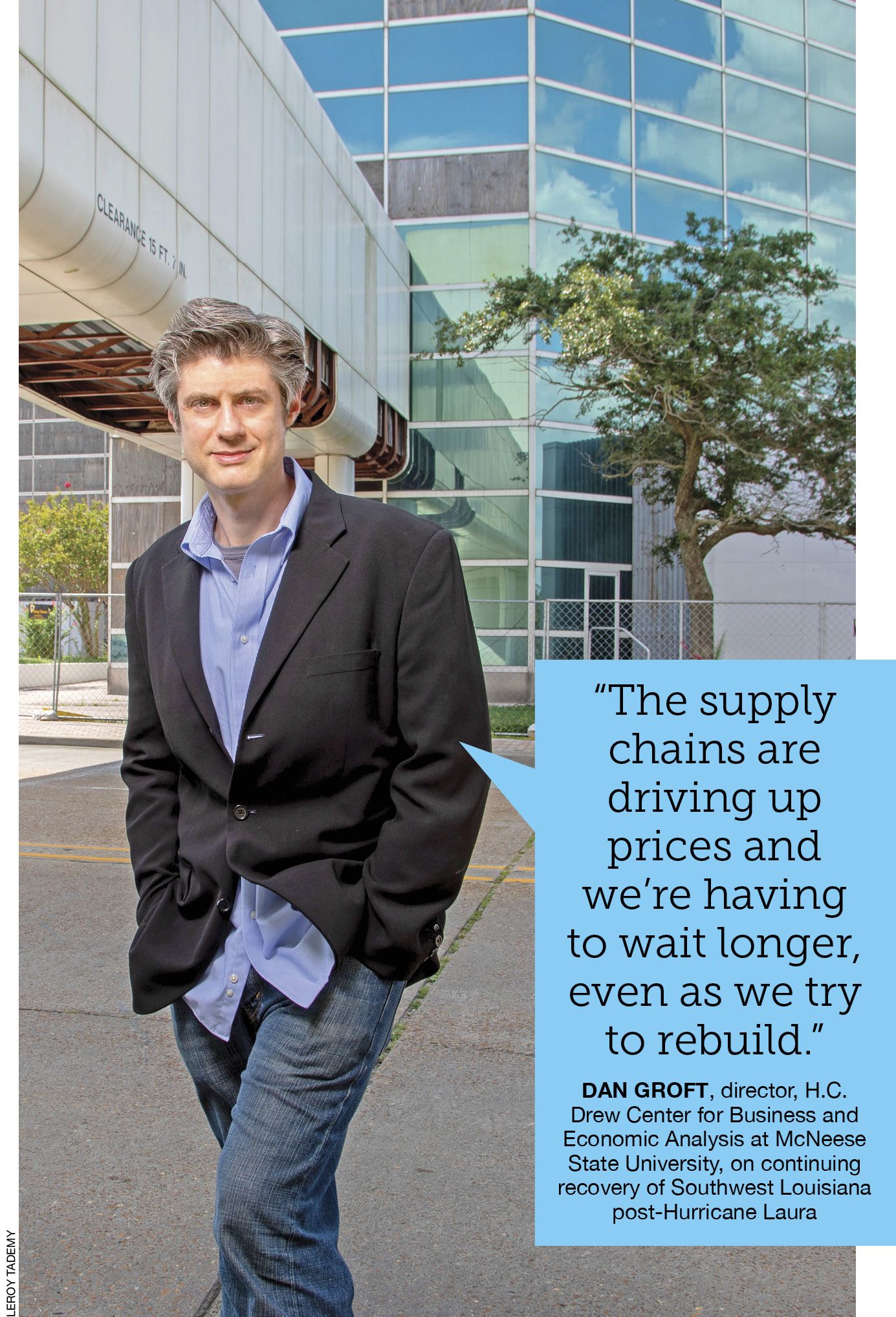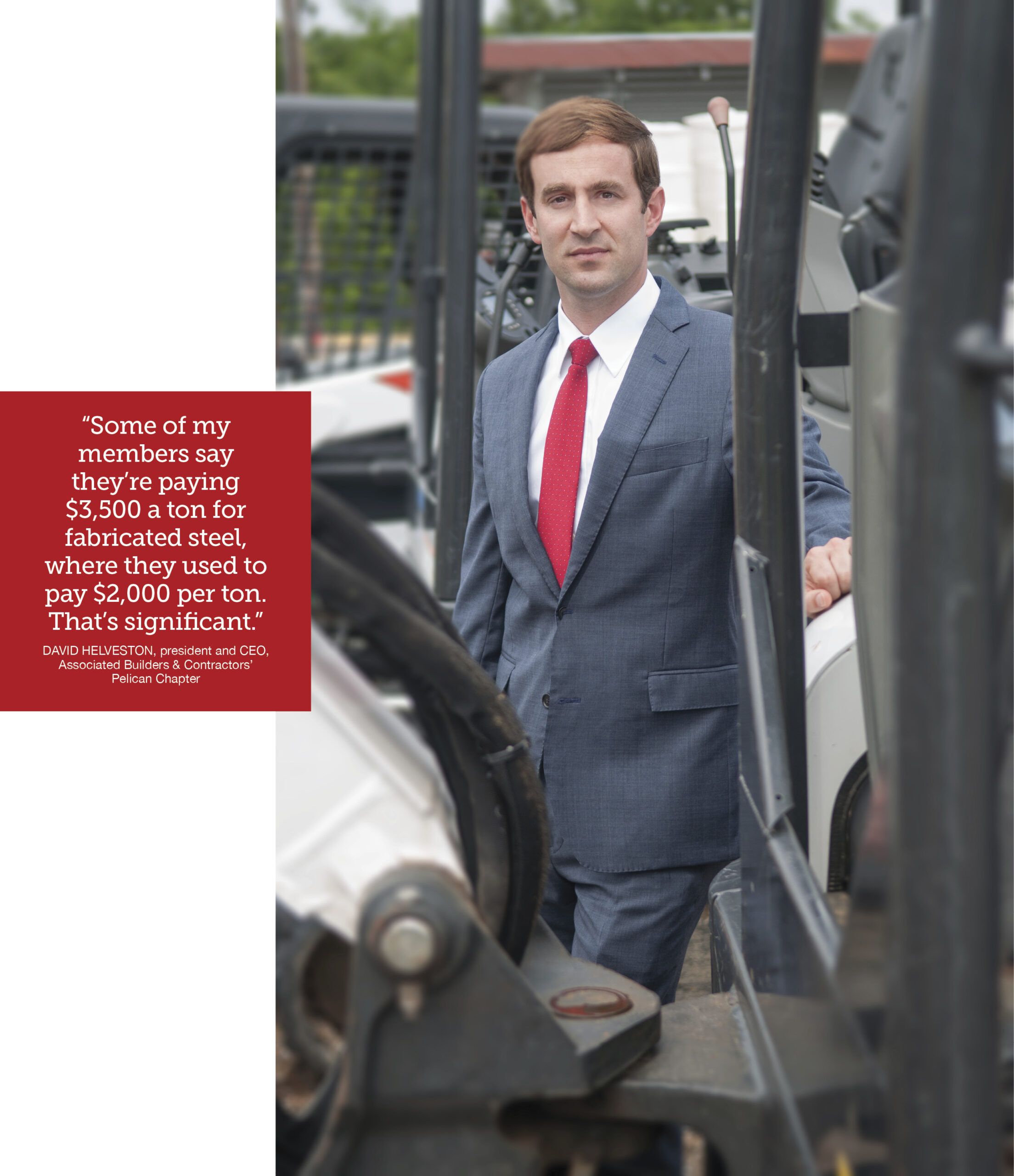It came as a surprise to many that Louisiana’s industrial supply chain was so vulnerable. A series of unfortunate and unthinkable events in 2020 and 2021 severely disrupted its reliability at nearly every level, and led to shortages in everything from steel, raw materials and industrial valves to skilled laborers and drivers.
The COVID-19 pandemic caused much of it, but not all. Shutdowns in upstream manufacturing facilities kicked it off, only to be followed by a range of transportation issues—including shipping delays at multiple West Coast ports, rail bottlenecks and an alarming lack of trucks.
In South Louisiana, all of that was exacerbated by the impacts of three catastrophic hurricanes in only 12 months, and a host of other weather scares. “COVID is bad enough, but dealing with multiple hurricanes, an ice storm and flood haven’t helped things,” says George Swift, president/CEO of the Southwest Louisiana Economic Development Alliance in Lake Charles. “Those areas of Louisiana that have been impacted by hurricanes Laura, Delta and Ida are suffering from amplified supply chain problems, as they’ve impacted the delivery and price of everything.
“Everything in Lake Charles is on back order,” he adds. “It’s that way everywhere you look.”
The disruptions are playing out in troubling fashion in the industrial space. Some South Louisiana chemical plants aren’t meeting production goals because they can’t get raw materials. And industrial facilities all along the Gulf Coast are delaying scheduled maintenance turnarounds and capital projects into 2022—after already pushing them back a year—because of rapid inflation and an unpredictable supply.
The fragility of the supply chain has come as a shock, says Mark Zappi, dean of engineering and executive director of the Energy Institute at the University of Louisiana at Lafayette. “I’m surprised at how sensitive our supply chain ended up being,” Zappi says. “Admittedly, there’s been somewhat of a perfect storm: COVID-19, some ugly elections and the hurricanes. Everything has lined up against us. But still, I’m surprised at how fragile our system really is.”
It’s the expectation of an efficient supply chain that has actually caused the problem, says economist Loren Scott of Loren C. Scott & Associates in Baton Rouge. “The second quarter gross domestic product was forecast to grow at 9 percent, but it only grew by 6,” Scott adds. “That’s largely because they were off on their forecast of ‘change in business inventories.’ What normally happens when you’re coming out of a recession is that there’s a huge buildup of inventories. That’s one of the things that pumps up GDP.”
In the past, the U.S. benefitted from a “finely honed supply chain, but that’s part of the current problem,” Scott says. “Many in industry have developed very sophisticated ‘just-in-time’ inventory systems. That works great when things are running smoothly, but when something like COVID comes along, it falls apart. That’s exactly where we are right now.”
Rethinking the supply chain
For the first time, it’s prompting a serious discussion among manufacturers, distributors and industrial customers about shaking up the supply chain and “rethinking” where materials are manufactured and purchased.
There’s also a move toward vertical integration, whereby raw materials would be produced and final products manufactured at the same site or region.
“We’re going to have to look at some critical ‘onshoring’ just to ensure our most critical supplies aren’t disrupted like they have been over the last two years,” ULL’s Zappi says. “Years ago, there was a movement toward vertical integration, where everybody in an industrial park could support someone else in the park. The idea was 20 years too early, perhaps, but it’s starting to get some traction again.”
Louisiana is ideally situated should things move in that direction, he adds. “Given our excellent infrastructure for bringing product in, we are uniquely positioned to support a vertically integrated industry. On top of that, we can produce things here. Given our transportation capabilities, we’re going to be major players in this, I think.
.
“It seems like a perfect storm has gathered up,” he adds. “I don’t think it’s something that’s going to persist for years, but it has come to a point where we need to rethink supply chains in general.”
Material shortages have, in turn, led to significant and rapid inflation. In an August analysis of Consumer Price Index data from the U.S. Bureau of Labor Statistics, the Associated Builders & Contractors national chapter found that construction input prices increased by 23.1% over a year ago. And prices for steel mill products are up a whopping 108.6%.
“One’s definition of transitory needs to evolve with this data,” says Anirban Basu, ABC’s chief economist, in a recent press release. “While it is quite likely that there will be less inflation a year from now, a rebounding economy, ongoing supply chain disruptions and limited productive capacity have conspired to generate rapid price increases.
“Many economists insist that the current situation is merely temporary; still, today’s input price increases can meaningfully affect contractor fortunes by trimming margins and delaying the onset of projects.”
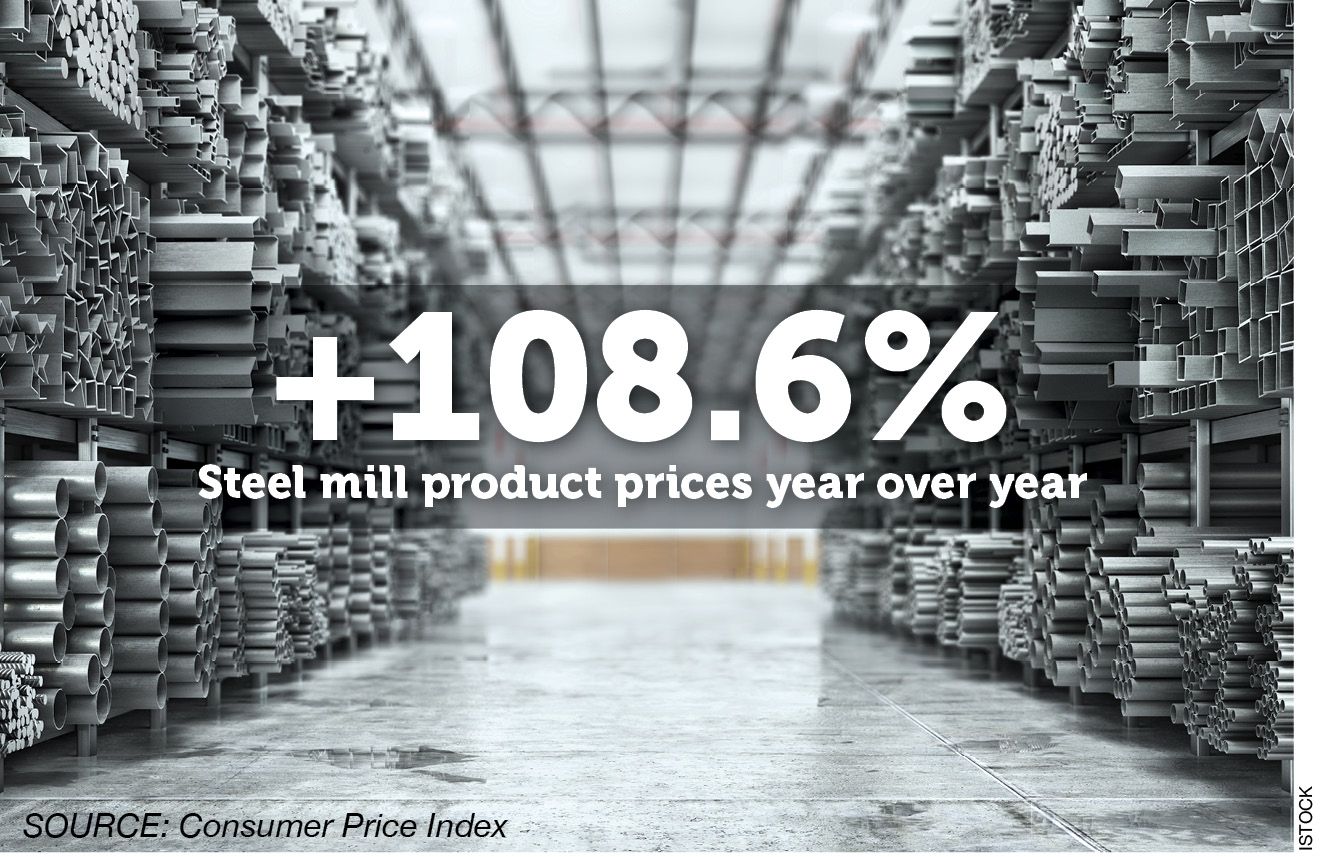 Basu concludes that the economy will continue to run hot into 2022, despite the impacts of the Delta variant, and produce hefty advances in gross domestic product and unusually elevated inflation.
Basu concludes that the economy will continue to run hot into 2022, despite the impacts of the Delta variant, and produce hefty advances in gross domestic product and unusually elevated inflation.
“The fact that steel prices are rising is not only an indication of the recovery transpiring in goods-producing industries such as construction and manufacturing, but also of the difficulty global suppliers are having keeping up with demand,” he adds.
The current dynamic won’t likely change in the near term, though there is some evidence of moderating inflation.
As such, he advises industrial contractors to build contingencies into their contracts to protect themselves from additional material price increases.
In it for the long haul
Industrial Info Resources, a market intelligence firm in Sugar Land, Texas, had predicted that a surge in previously backed up maintenance and capital projects could begin later this year, and lead to severe shortages in labor. That’s all changed, says Trey Hamblet, IIR’s vice president of research, as projects have been delayed yet again. “They’re kicking projects down the road that were supposed to begin this year to next year because they’re not sure they can get the materials they need,” Hamblet says.
And each COVID spike that comes along sends another ripple through the supply chain and causes additional delays, economist Scott says.
“When COVID hit, there were some projects in Louisiana that were shut down, such as Methanex 3 and Monsanto,” he notes. “Then there were turnarounds that had been planned, then postponed, and a number of announced capital projects waiting for a final investment decision. Instead, those were postponed.”
Items that used to be easy to get, such as specialty valves and fittings, must now be ordered weeks in advance, and it has many industrial owners nervous that they won’t be able to control their costs.
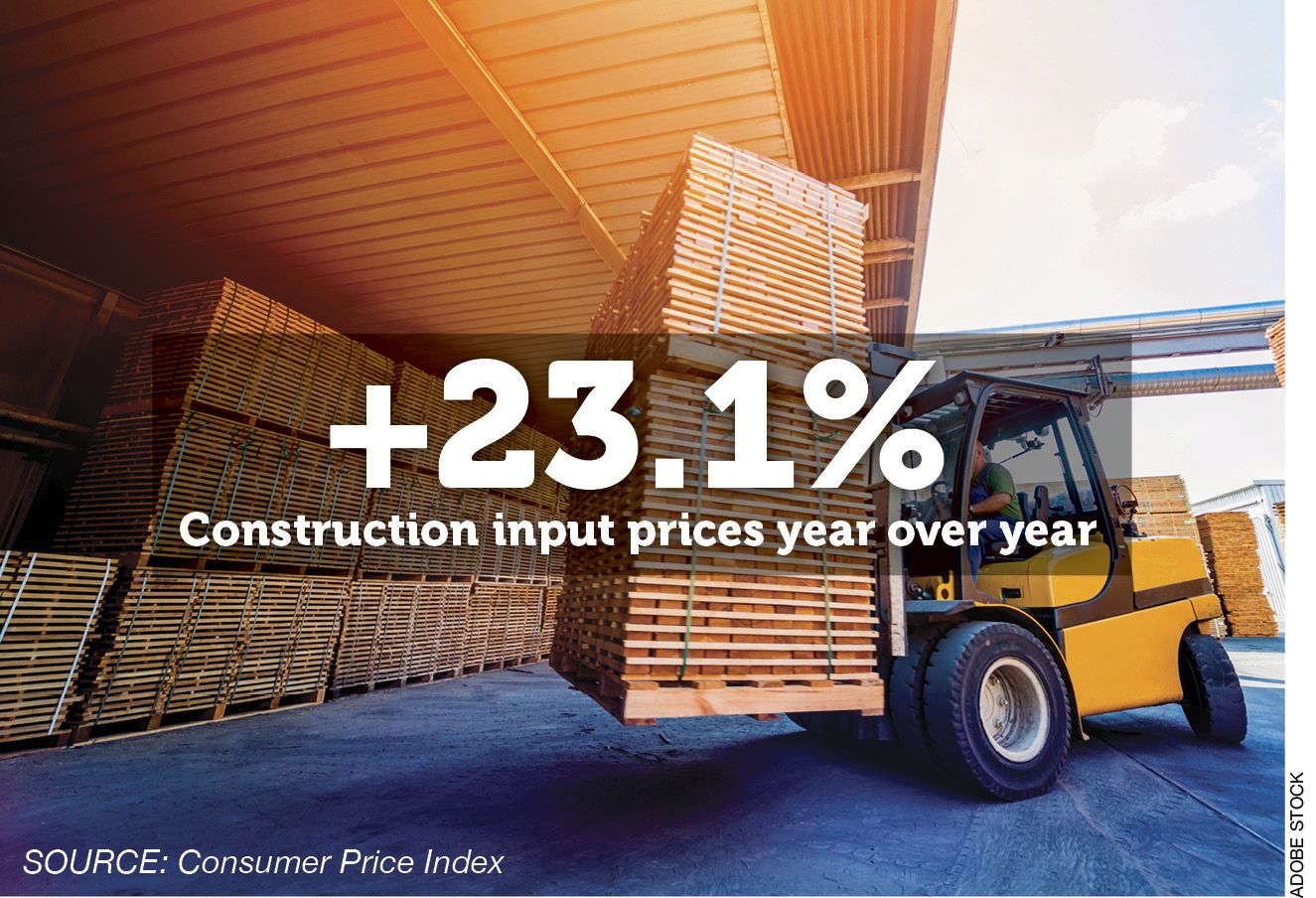 David Helveston, president and CEO of Associated Builders & Contractors’ Pelican Chapter in Baton Rouge, says price instability is the primary culprit—the prices of steel, pipe and valves have increased by as much as 75% in some cases since June 2020.
David Helveston, president and CEO of Associated Builders & Contractors’ Pelican Chapter in Baton Rouge, says price instability is the primary culprit—the prices of steel, pipe and valves have increased by as much as 75% in some cases since June 2020.
“They used to get 30-day prices on steel and that’s been shortened to two days,” Helveston says. “Some of my members say they’re paying $3,500 a ton for fabricated steel, where they used to pay $2,000 per ton. That’s significant.”
Projects, therefore, are requiring a lot of additional planning. “Specialty valves would have normally been in stock, but they’re having to specially order them,” he adds. “Now it’s a two- or three-week timeline, where before they could just get them off the shelf.”
Jim Rock, executive director of the Lake Area Industry Alliance in Lake Charles, says a lack of commercially licensed truck drivers has gotten so bad that it’s slowing production among some of his plant members. A persistent shortage of drivers with a commercial driver’s license, or CDL, is nothing new, but the problem has worsened significantly during the pandemic.
“It’s delaying the delivery of some raw materials in the chemical manufacturing sector,” Rock says. “One of my members who receives HCL by truck says a disruption in those deliveries has cost them production. It’s a widespread problem … I also know the owner of a local trucking company who is having to drive his own trucks because he can’t get enough drivers.”
COVID has taken the trucker shortage to a new level, and industrial owners can’t simply pivot to another mode of transportation. “You can’t just flip a switch and say I’m going to take product by rail or pipeline today because I can’t get a truck,” Rock says.
Some are proactively looking for solutions to the trucking problem.
Rene Lapeyrolerie, commissioner of DOTD’s Office of Multimodal Commerce in Baton Rouge, is working with both the trucking industry and Louisiana Community and Technical College System to resolve the driver shortage at the local level.
“We’re talking to them about partnerships, providing instruction and looking for opportunities for scholarships from industry to get more CDLs,” Lapeyrolerie says.
Her office also seeks to eliminate any bottlenecks that might prevent potential drivers from obtaining a CDL. “We’re looking at the possibility of allowing 18- to 21-year-olds to obtaining a license, with certain restrictions (such as not being allowed to transport hazardous materials and only traveling within the state),” she adds.
Lake Charles
labor drain
Dan Groft, director of the H.C. Drew Center for Business and Economic Analysis at McNeese State University, says Lake Charles has its own unique set of supply chain problems as it must also deal with the lingering effects of hurricanes Laura and Delta.
The resulting 9.6% drop in population in the area since February 2020—the largest percentage drop of any MSA in the state—has led to significant labor supply issues there. In fact, the Louisiana Workforce Commission reports that there are 33% more job openings in the Lake Charles MSA than before the pandemic.
“We’ve lost about 2 percent of our workforce since the hurricane,” Groft says. “I’m really worried about the availability of skilled labor with everyone trying to rebuild.”
Swift agrees that worker shortages are a persistent concern in the Lake Charles area, and the primary cause is a lack of available housing. Nevertheless, he expects the problem to resolve itself somewhat in the wake of the expiration of government benefits at the end of July.
The SWLA Economic Development Alliance is working with SOWELA and McNeese through its Education & Workforce Committee to connect businesses with educational institutions.
Says Swift: “A lot of people that are unemployed will need to be retrained, and they have some short-term programs at SOWELA and the ABC school to help people get some skills.”
Material shortages have also been exacerbated as people rebuild in the wake of the hurricanes, resulting in a corresponding increase in the cost of building materials. “The supply chains are driving up prices and we’re having to wait longer, even as we try to rebuild,” Groft says.
Time will be the ultimate elixir, he hopes. “It’s going to time for the markets to readjust. Even the Federal Reserve is talking about this transitory inflation being temporary as these supply chain bottlenecks work themselves out over time.”
.
Intensifying worker shortages
The remainder of South Louisiana’s industrial market will likely feel a similar pinch in labor supply sometime in 2022, when some 80-plus delayed plant maintenance turnarounds along the Gulf Coast finally pull the trigger. That will likely result in an unprecedented tsunami of work and put an immediate strain on the local workforce, says IIR’s Hamblet.
As for now, ABC’s Helveston says his contractor members “can get bodies, but where they’ve had problems is finding the skilled workers. We’ve heard from our contractor members and the owners of the facilities themselves a lot of discussion about the lack of qualified and skilled millwrights and the pipeline of millwrights going forward.”
There’s also concern that Hurricane Ida and last year’s hurricanes could exacerbate the problem for South Louisiana. “Between Ida, Laura and Delta, what impacts will those have on construction availability?” Helveston asks. “When the rebuilding work is paying great, will that draw individuals away from the industrial sector?”
A new COVID-19 surge could be another fly in the ointment. Connie Fabre, president & CEO of the Greater Baton Rouge Industry Alliance, says there’s concern among her membership over availability this fall should COVID become more of an issue.
ABC Pelican is tackling the problem from all angles, going after high school students for entry level positions while also attempting to fill the need for high-end millwrights and pipefitters.
“There’s a bit of a gap right now,” Helveston says. “We’re just trying to fill up classrooms full of millwrights and pipefitters and part of that is communicating what those careers are to young adults. Everybody wants to be a welder, but they need to know and be aware of all of the positions that are out there.”
ABC’s Education and Manpower Committee has been an “invaluable” resource throughout the process, he says, as it is comprised of those members who actually do the hiring. The ABC training center on Highland Road is nearing full capacity, with a heavy concentration of millwright and pipefitter students.

